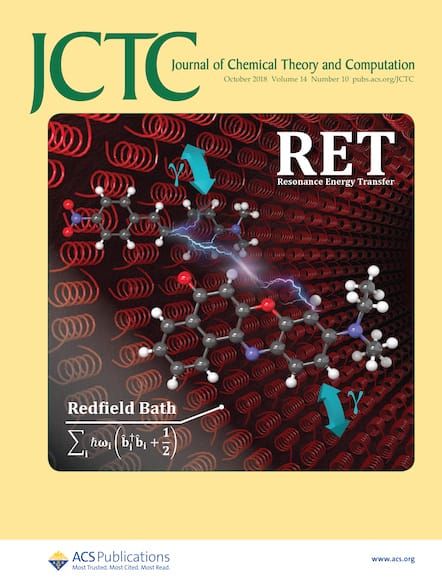探索电场作用下活化能与反应能之间的线性能量关系。
IF 5.5
1区 化学
Q2 CHEMISTRY, PHYSICAL
引用次数: 0
摘要
电场(EF)介导的化学最近引起了越来越多的关注,部分原因是它能够催化广泛的化学反应。EF如何影响目标反应的动力学和热力学是一个关键问题。在此,密度泛函理论(DFT)和MP2计算均表明,EF作用下活化能ΔΔE‡和反应能ΔΔErxn的变化呈现线性能量关系(LER) ΔΔE‡= mΔΔErxn。这已经针对几种反应进行了测试,如SN2和质子转移反应,包括中性和带电系统以及吸热和放热过程。线性系数m近似于偶极矩变化的比值,即所研究反应的Δμ‡/Δμrxn。在高达≈1 V/nm的电场强度下,LER保持良好,但在较大的电场强度下与dft计算结果有所偏差。这种偏差主要是由EF作用下分子几何结构的变化引起的。具有较大极化率的系统在EF下会经历较大的几何变化,从而导致较大的偏差。此外,我们提出反应势垒可以用-Δμ‡F - 0.5Δα‡F2来预测,而对于较小的EF强度,用-Δμ‡F可以很好地近似。提出的LER和场相关势垒估计在ef介导的化学反应中具有广泛的适用性。本文章由计算机程序翻译,如有差异,请以英文原文为准。
Exploring the Linear Energy Relationships between Activation Energy and Reaction Energy under an Electric Field.
Electric-field (EF)-mediated chemistry has recently garnered increasing attention partly owing to its capability to catalyze a broad range of chemical reactions. How the EF affects the kinetics and thermodynamics of target reactions is a critical question. Herein, both density functional theory (DFT) and MP2 calculations suggest that the change of activation energy ΔΔE‡ and the change of reaction energy ΔΔErxn under an EF display a linear energy relationship (LER) ΔΔE‡ = mΔΔErxn. This has been tested against several reactions such as SN2 and proton transfer reactions, including neutral and charged systems and endothermic and exothermic processes. The linear coefficient m approximates to the ratio of the dipole moment change, i.e., Δμ‡/Δμrxn, of the studied reactions. The LER holds well at EF strengths up to ≈1 V/nm but deviates from the DFT-calculated results at larger EFs. Such deviations are mainly caused by the molecular geometry changes under an EF. Systems with larger polarizability experience greater geometry changes under an EF, thus leading to larger deviations. In addition, we propose that the reaction barrier can be predicted by -Δμ‡F - 0.5Δα‡F2, while it is well approximated by -Δμ‡F for small EF strengths. The proposed LER and the field-dependent barrier estimation promise broad applicability in EF-mediated chemical reactions.
求助全文
通过发布文献求助,成功后即可免费获取论文全文。
去求助
来源期刊

Journal of Chemical Theory and Computation
化学-物理:原子、分子和化学物理
CiteScore
9.90
自引率
16.40%
发文量
568
审稿时长
1 months
期刊介绍:
The Journal of Chemical Theory and Computation invites new and original contributions with the understanding that, if accepted, they will not be published elsewhere. Papers reporting new theories, methodology, and/or important applications in quantum electronic structure, molecular dynamics, and statistical mechanics are appropriate for submission to this Journal. Specific topics include advances in or applications of ab initio quantum mechanics, density functional theory, design and properties of new materials, surface science, Monte Carlo simulations, solvation models, QM/MM calculations, biomolecular structure prediction, and molecular dynamics in the broadest sense including gas-phase dynamics, ab initio dynamics, biomolecular dynamics, and protein folding. The Journal does not consider papers that are straightforward applications of known methods including DFT and molecular dynamics. The Journal favors submissions that include advances in theory or methodology with applications to compelling problems.
 求助内容:
求助内容: 应助结果提醒方式:
应助结果提醒方式:


